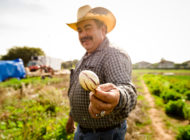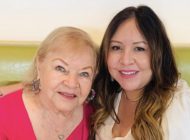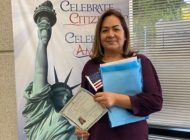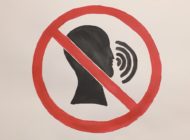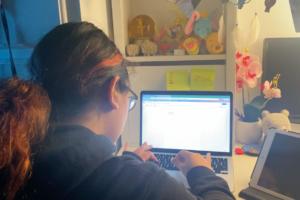After years of violence in Colombia due to a civil war, the Restrepo family leaves their home in search of finding prosperity in America.
By EVYN BRYANT
EL NUEVO SOL
There is a space in history reserved for those who make change, whether on a grand level or an individual level. Immigrants have repeatedly taken up that space in the history books, creating change for themselves and their families.
Many people across the world want what is best for their family and children. Oftentimes this entails families or even individuals leaving what is normal and known, for the abnormal and the unknown.
The United States of America sees a lot of immigration from countries all over the world. However, what the United States sees that other places may not is much more immigration from Latin American countries. With close borders and a journey that hints at success and the acquisition of dreams, America often becomes the destination of many — many who are looking to better their lives.
My name is Evyn Bryant and my Colombian family went through this process in the early 1960s and again in the late 1970s. They came from Medellin, Colombia, which is nestled in the mountainous Antioquia region in the northern part of the nation and this is the story of their journey and the search for a better life.
The country of Colombia is known for many things, but if you asked the average person they would most likely say something related to coffee, the novelist Gabriel Garcia Marquez, or the notorious drug kingpin Pablo Escobar.
However, before the story of my family continues, it needs to be understood why they come from such a violent and poverty-stricken era in Colombian history.
In 1948, Jorge Eliécer Gaitán, a presidential-hopeful, was assassinated, prompting massive riots in the country’s capital, Bogota. El Bogotazo, as the riots are more commonly known, became the largest urban riots in Latin American history, subsequently destroying much of Colombia, including the capital city of Bogota, leaving over 3,000 dead and millions of dollars in damage.
This series of events kicked off a decade-long, vicious and deadly civil war known as La Violencia, killing an estimated 200,000 Colombians (although the true number is not known), forcing millions of other Colombians to migrate across several country borders and all but destroying the economy and livelihoods of a once prosperous farming nation.
The civil war created many push factors for Colombian immigration. La Violencia destroyed much of the farmland and rural work, forcing many Colombians to find new trades and skills, pushing them towards more urban areas. This included a new era of industrialization, more specifically in the Colombian textile industry. Despite the push for textiles, many Colombians still found it difficult to earn living wages and other employment paths. The lack of job opportunities created by the destruction led to economic troubles for many, including my family.
Coming off the heels of La Violenza in Colombia, and trying to make something out of nothing, Bernardo Restrepo, my grandfather, and Gilma Restrepo, my grandmother, made the ultimate decision to immigrate to the United States of America.
“Work was very hard in Colombia, and very scarce,” said Laura, the second Restrepo child and oldest of the three daughters. “[My parents] didn’t have any money. And they decided to make the move.”
In late 1961, three years after La Violenza ended and with no promise of a future in Colombia, the first member of the Restrepo family, Bernardo, moved to Brooklyn, New York in search of work, money and the chance to give his three children, Edgar, Lida and Laura a better life. My mother Patricia, and the youngest of the four Restrepo children wouldn’t be born until 1966.
“I think they moved like many immigrant families do,” Patricia said. “For a better opportunity for their children.”
Bernardo came alone to the United States, in an attempt to first settle roots and establish some sort of life prior to the rest of his family arriving. He would find a job in a factory, get an apartment and save up enough money over the span of about a year to officially start a new chapter. This initial trek afforded him the opportunity to bring Gilma and their three kids over in early 1963.
Immigration and movement across national borders was a much simpler process in the 1960s than it is now, and it is most certainly a less contentious subject. It was as simple as buying a ticket or finding your way to the United States and registering for a residence card, which gave immigrants the chance they needed to be able to legally live and work in the country.
Like many immigrants, the Restrepo family had to deal with their fair share of struggles related to being new residents in an unfamiliar country. Frustrations from lack of knowing the language, discomfort from the New York winters, the confusion of the American public transportation system and of course discrimination were all but common for Bernardo and his family.
As parents, Bernardo and Gilma definitely dealt with more of the everyday, expected struggles. They had difficulty navigating the grand and maze-like streets of a snowy New York City and they struggled to comprehend what people were saying to them, but one distinct memory of discrimnation early into their time in America still remains. It is a memory of racism, and intolerance.
“The barber, I remember like it was today. He looked at him and goes, ‘no, get out’,” an emotional Edgar reminisced. “We don’t cut spics hair here.”
Despite some of the struggles and discrimination, the next nine years in America gave Edgar, Lida, Mona and Patricia a childhood that not many Colombian children get to experience. Good schools, the ability to learn another language and the opportunity to succeed in a promising world put the children a step ahead.
In 1971, after deciding that they had saved enough money, the Restrepo’s returned to Colombia to a new house and a newly formed butcher business with the dream of succeeding. A meat shop was started in the family’s living room, supplying the local village with choice meats.
The family did well for a few years, the kids lived life with a different attitude thanks to their American experience. However, things did not last. The butcher shop was run out of business by a local farmers market built in the mid-70s, once again forcing the Restrepo family to make a change, a change to survive.
“My mom told my dad, ‘you know what, I’m going back,’” recalled Edgar. “We were starving. There were a lot of times where we didn’t even eat right, so my mom got fed up.”
The return to Colombia lasted less than a decade and in 1977, seven years after returning to Colombia, Gilma made the decision to once again head for America, this time settling in Glendale, California. She initially made the journey alone, much like her husband had over 15 years prior, to find work, save money and make a life for her family.
This would end up being a permanent stay, as the family never returned to live in Colombia. It was at this point that the Restrepos really built their dream of succeeding in America.
“I think this country gives everyone more opportunities. You know we didn’t have those opportunities in Colombia,” said Lida.
Unfortunately Bernardo and Gilma are no longer with us. My grandfather passed away almost 25 years ago in 1997, and my grandmother recently passed away in September 2020 from COVID-19. However, one thing is certain, the legacy and memories left behind by the first of the Restrepos to explore uncharted territory stands, their bravery despite the promise of success set up a bright and prosperous future, even if it was for just one immigrant family.
“We were able to achieve the American dream of buying property. Bernardo and Gilma lived their last days very comfortably,” Laura said. “So we benefited greatly. The only thing is that you kind of lose a bit of your culture in the process. And that’s kind of sad to me.”
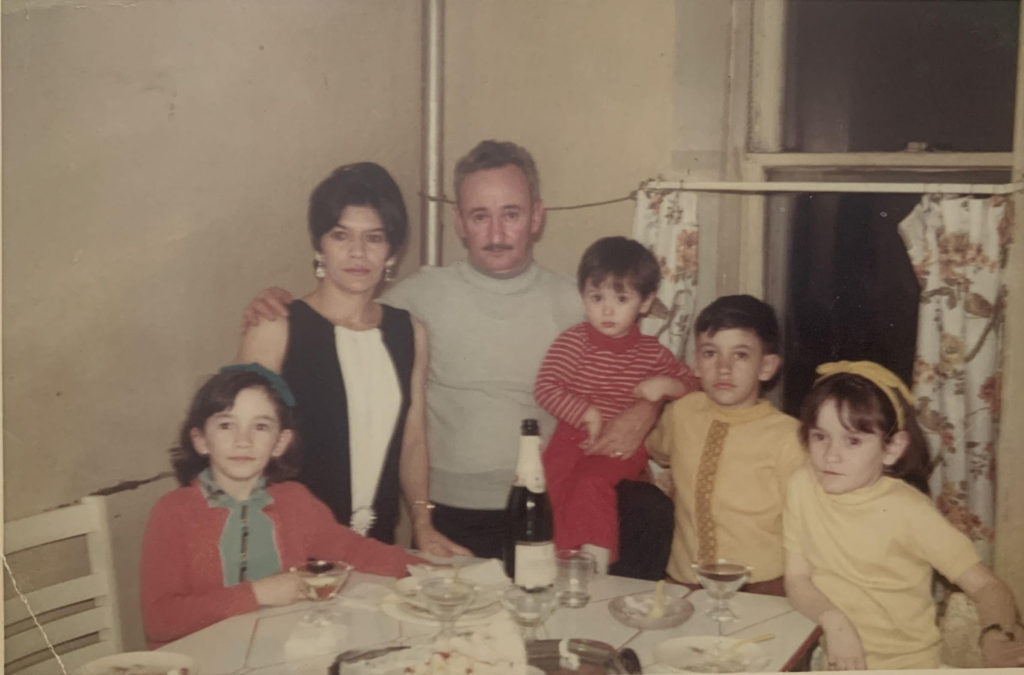
The Restrepo family in Brooklyn, New York. Photo via Evyn Bryant (From left to right: Lida, Gilma, Bernardo, Patricia, Edgar, Laura)
Tags: Bogota Brooklyn California Colombia El Bogotazo family Humans immigration La Violencia Medellin migration New York









